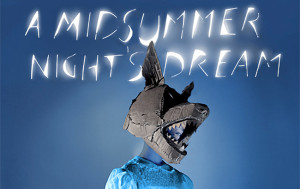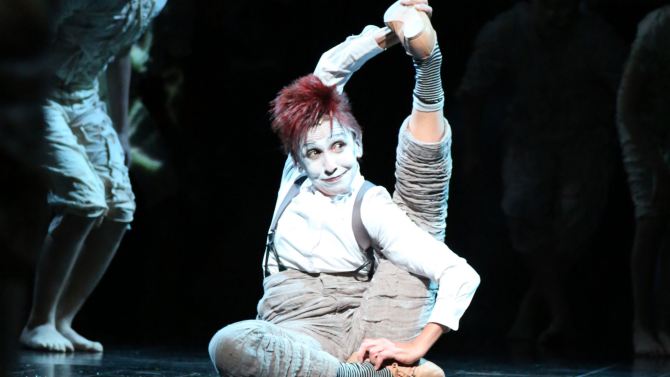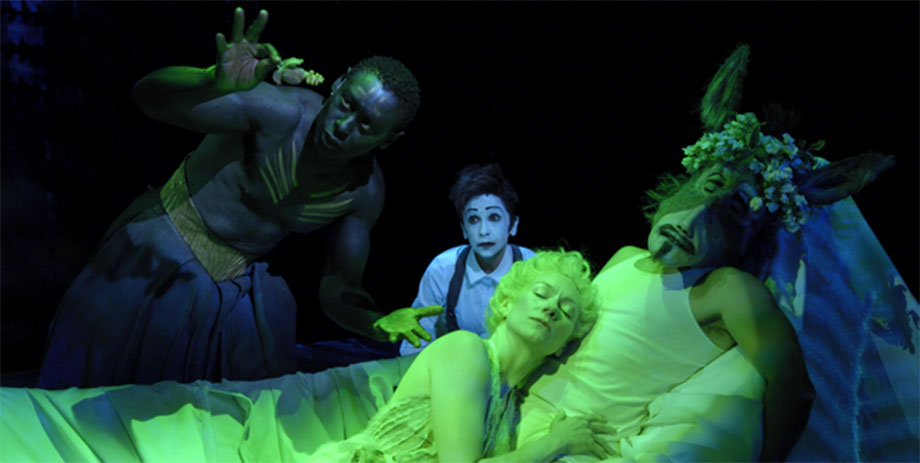Julie Taymor’s A MIDSUMMER NIGHT’S DREAM: a review of the film
July 1, 2015 § 1 Comment
Julie Taymor’s acclaimed production of A Midsummer Night’s Dream for Theatre for a New Audience is now available in a fascinating new film, and it is well worth seeing both for her ideas about the play and about plays on film.
A Play and a Film
Because MND is so much about the theatre itself, it is not a surprise that Taymor has eschewed the location shoots she adopted for her previous Shakespeare films – Titus and The Tempest. This film records her production inside the theatre where it was performed live, capturing the visual splendor and relentless inventiveness for which she is known, but it is quite different than the relatively static live broadcasts of plays for which Britain’s National Theatre has recently become known. Taymor uses a lot of filmic techniques. Cameras on stage capture the action from extremely close distances and viewing angles that no live audience member could ever experience, and (especially at the beginning of the film) the cameras are so active as they quickly pan around the crowded stage that they give the impression of being active participants. At other times the camera becomes such a close confidant of the actors, especially David Harewood as Oberon, that the style of the acting shifts to the whisperingly cinematic.
Occasionally you get a more traditional view of the stage, usually when Taymor is recording the interaction of actors and the extraordinary projections on floating silk banners and canopies that astounded the live audiences in Brooklyn. As impressive as these shots are, this alternation between the conventions of film and theatre is sometimes disconcerting.
Kathryn Hunter, Genius
Both the production and the film are completely built around the performance of the remarkable Kathryn Hunter as Puck. She opens the film as an exhausted sleeper drifting off into dreams, and when the rude mechanicals (as modern dress Brooklyn construction workers) show up and cut her bed free she literally drifts into the grid above the stage like a balloon. Her first full scene, with what is ordinarily a single fairy but is here a full cast of children who sing and chant the scene, establishes her distinctive childlike voice. Her wide-open wonder plays especially strongly in her scenes with Oberon, where she idolizes him like a parent–sometime fearful and sometime delighted to be pleasing him. It is the most fully imagined and realized Puck I have ever seen. For her performance alone, the film is worth your time.
The film is not without theatrical and cinematic flaws. Taymor is frequently more concerned with the big picture than the detail – and almost always prioritizes the visual over the auditory. The sound appears to have been captured through body mics, but sometimes you hear the faint echo of an additional actor’s mic. Often the scansion is sloppy. (At one point the possessive form of Theseus’, which should be two syllables, thes-yus, is rendered as four: Thes-e-us-es!)
Multiethnic and International
The production is especially interesting in the realm of the supernatural, where Taymor’s visual genius prevails, while the “real” world is more mundane. Unfortunately that is not just because the visual presentation is more restrained. It seems the interpretive act was just less interesting to Taymor. The lovers were trivialized, with only Mandi Masden as Helena making an impression, and the admirably multiethnic mechanicals were largely conveyed through broad stereotypes. Max Casella was amusing as a Brooklynese Bottom, but (as is often the case) Flute steals the show from him. In this case it is Zachary Infante’s Spanish speaking Francisco Flute that unlocks the wonder of Shakespeare’s power, as he discovers the ability to invest words he scarcely understands with meaning and power.
The most interesting casting of the evening is Okwui Okpokwasili as the conquered Queen Hippolyta. Both the gender and racial politics of the part were treated lightly, but her powerful presence was more than enough to make the point.
Finding the right level for a film of a play is a complex task. This relatively complete production of the script is FAR more satisfactory than Michael Hoffman’s disappointing, choppy 1999 film, and in many ways is also more pleasing than Adrian Noble’s similarly mixed film/play (1996) of his RSC production, if only because it utilizes more interesting theatrical conventions.
The film is in limited release, but absolutely worth catching on a large screen whenever you can.




[…] I reviewed this film earlier. My review is available here. […]